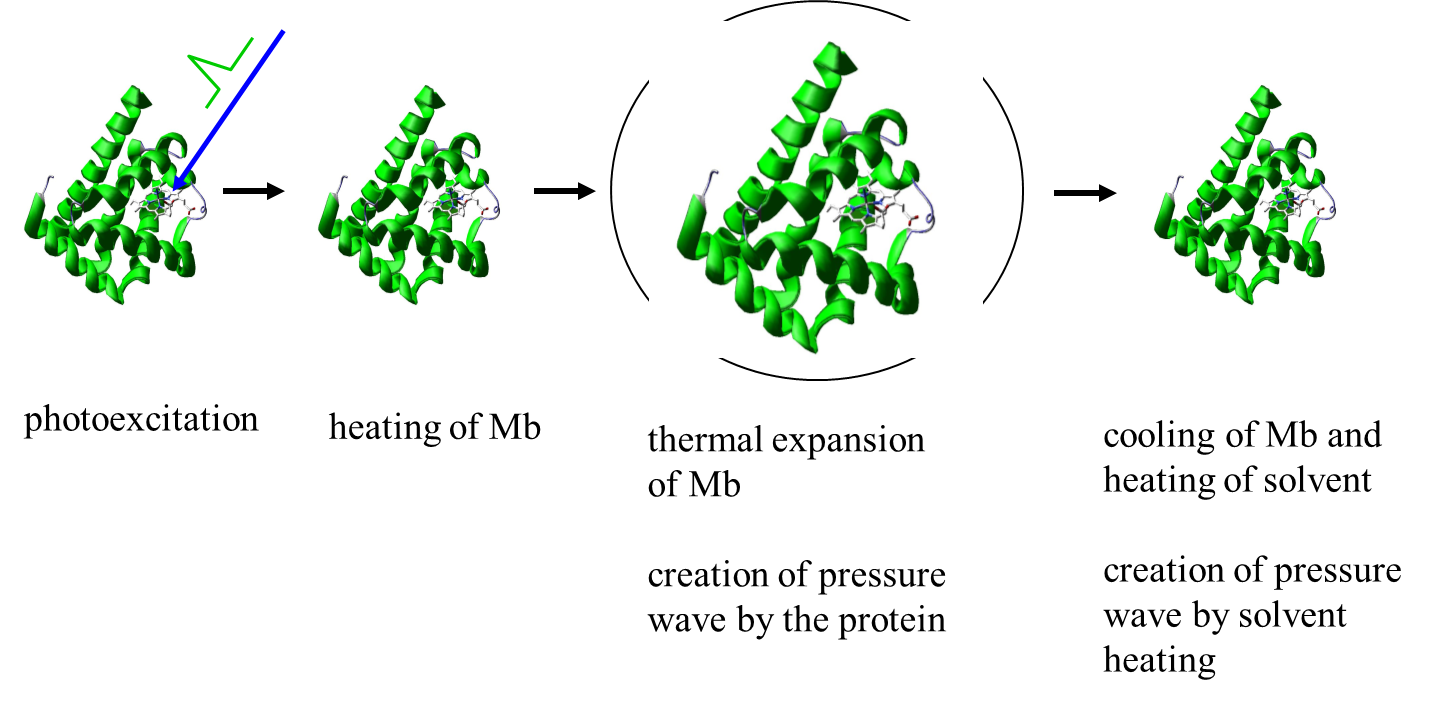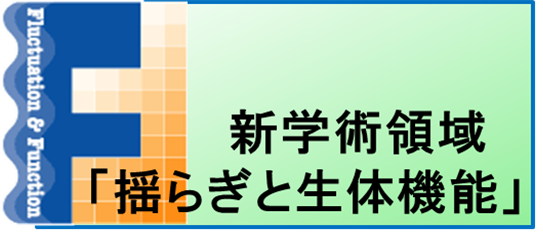
ResearchResearch
1.H.2 Energy relaxation of biological proteins in picosecond time scale: Myoglobin
There are many biological proteins that use light energy to create chemical
energy or for a signal transducer function. Such proteins generally have
chromophores inside the proteins to absorb the light from the sun. The
energy that is not stored as chemical energy or not used for the biological
function should be eventually damped into the surrounding medium. How is
the energy dissipated into the solvent; through the protein indirectly
or directly into the solvent? How can we observe the route? Energy transfer
from a photoexcited chromophore embedded in a protein matrix is important
to understand the molecular mechanism of the damping of the light energy
that is used for triggering a protein dynamics and has been attracting
many scientists. We investigated the energy dissipation route of deoxyMyoglobin
in buffer from photo-excited chromophore to the solvent by the time-resolved
transient grating (TG) method. The observed peak delay of the deoxymyoglobin
was found to be -15 ps; i.e., the acoustic peak delay of the signal was
anormalously negative after the photoexcitation of deoxyMb. This negative
value is explained by the two acoustic waves created from the medium as
well as from the protein thermal expansion. We believe that this is the
first direct experimental evidence for the heating of the protein matrix
after the heme excitation and the thermal expansion of the protein structure
by the excess energy.

(Back)


photo-physical-chemistry lab,京都大学大学院理学研究科 化学専攻 光物理化学研究室
〒606-8502
Kitashirakawaoiwakecho
Sakyoku, Kyoto, Japan
TEL +81-75-753-4026
FAX +81-75-753-4000
<Links for members>
Bake Web mail (Set up)
Manuals